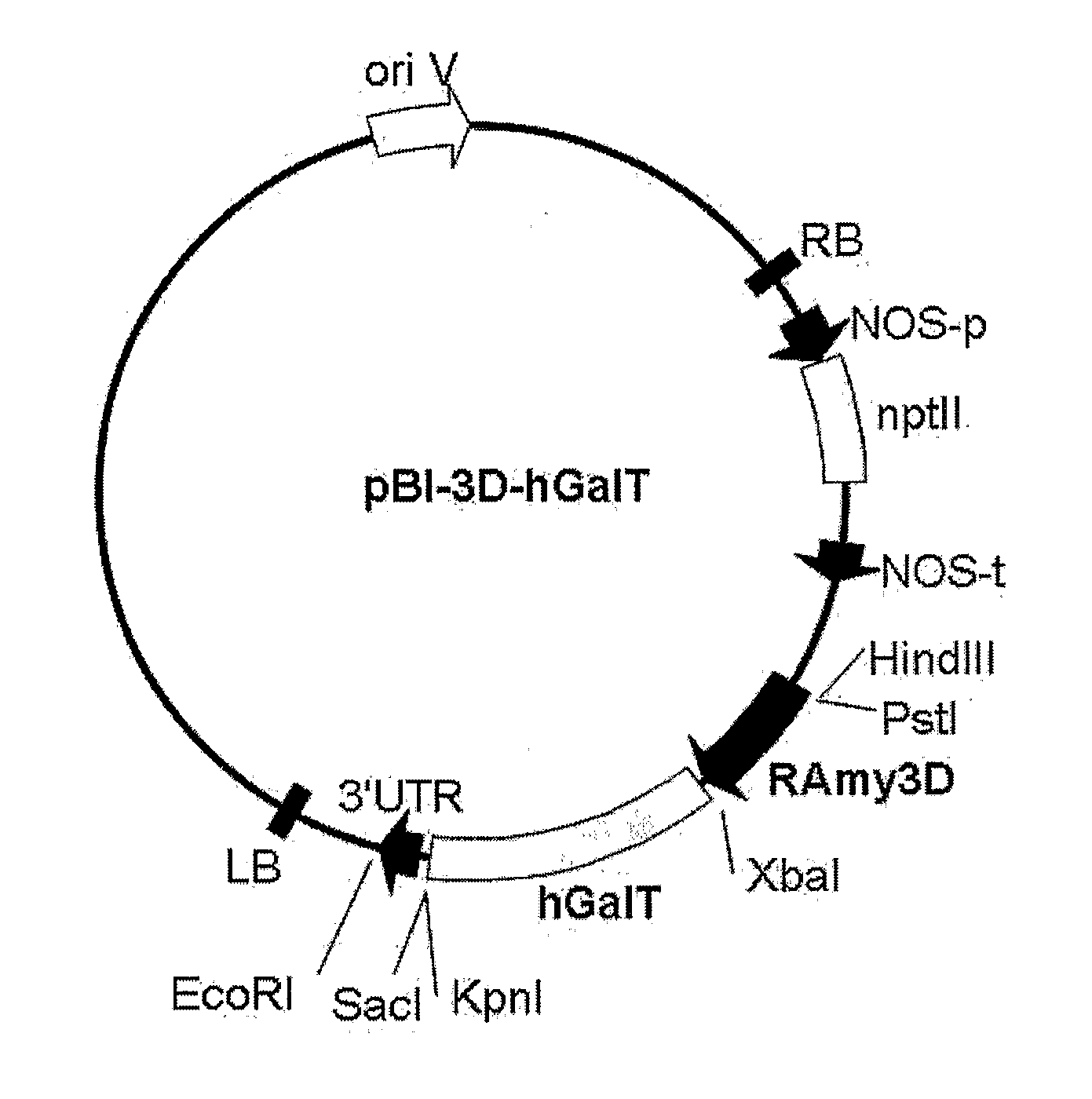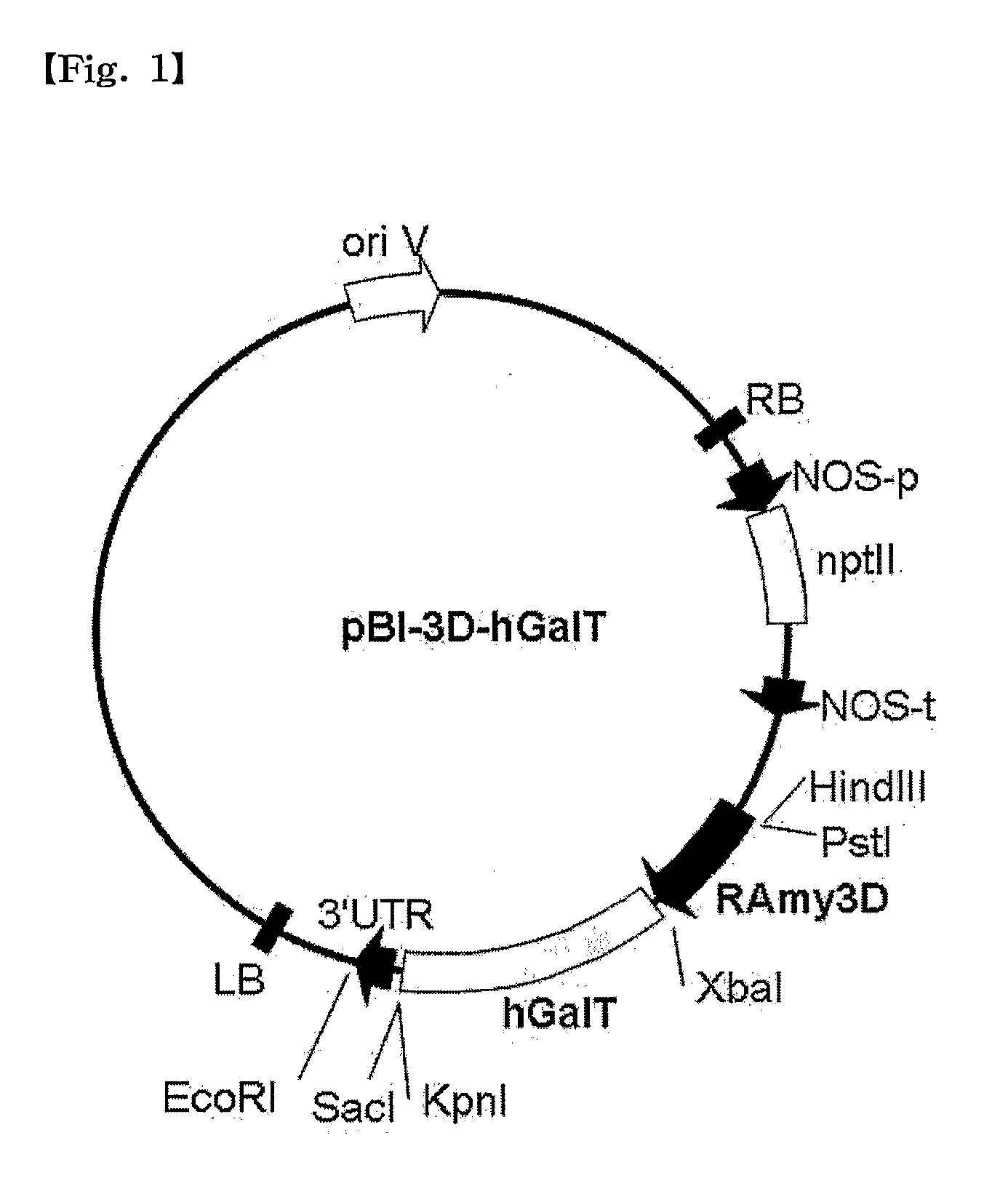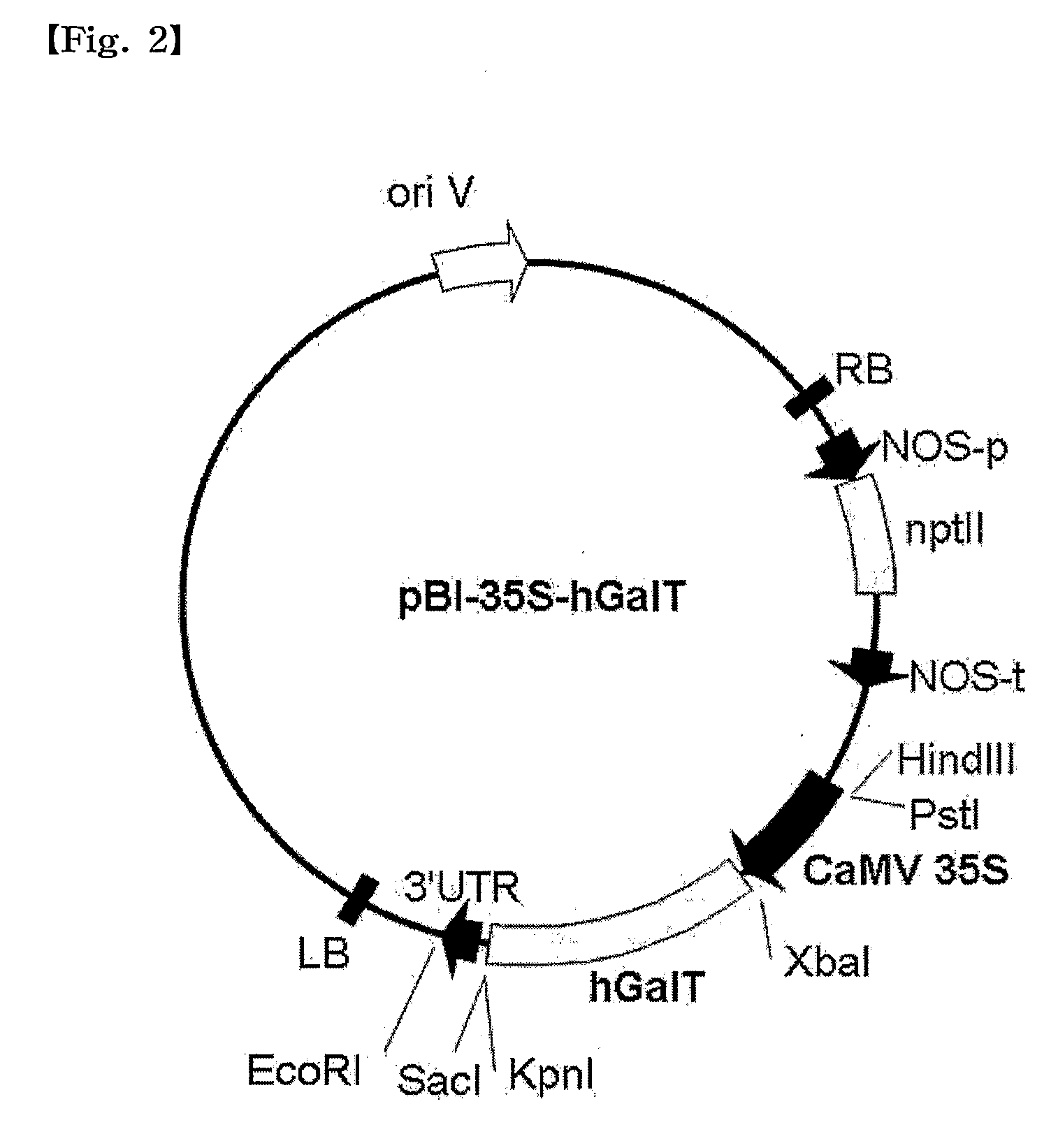Plant Recombinant Human CTLA4IG and a Method for Producing the Same
a recombinant human and ctla4ig technology, applied in the field of recombinant vector pbi3dhgalt or pbi35shgalt, can solve the problems of insufficient response of t cells to conventional immunosuppressants, adverse side effects of non-specific suppression of cyclosporin and fk506, and achieve the effect of improving in vivo half life and low cost mass
- Summary
- Abstract
- Description
- Claims
- Application Information
AI Technical Summary
Benefits of technology
Problems solved by technology
Method used
Image
Examples
example 1
Construction of Recombinant Vectors pBI-3D-hGalT and pBI-35S-hGalT Containing a β1,4-Galactosyltransferase (hGalT) Gene
[0077]Cleavage maps of recombinant vectors pBI-3D-hGalT and pBI-35S-hGalT containing a CTLA4Ig gene, as constructed in this Example, are schematically shown in FIG. 1 and FIG. 2, respectively.
[0078]Construction of the recombinant vectors pBI-3D-hGalT and pBI-35S-hGalT is as follows.
[0079]Cloning of a β1,4-galactosyltransferase (hGalT) gene for glycosylation modification of CTLA4Ig was amplified by construction of two primer sets based on the sequence data available from the NCBI Gene bank.
[0080]A gene galF (1-381 bp) at the N-terminal region of β1,4-galactosyltransferase was amplified using human genomic DNA as a template, whereas a gene galR (382-1193 bp) of the C-terminal region was amplified by culturing the human fibroblast cell line MRC5, extracting mRNA from the cultured cells, and synthesizing cDNA from the extracted mRNA using reverse transcriptase, followed...
example 2
Construction of a Recombinant Vector pMYN414 Harboring a CTLA4Ig Gene
[0089]A gene cleavage map of the recombinant vector pMYN414 harboring a CTLA4Ig gene constructed in this Example is schematically shown in FIG. 3.
[0090]Construction of the recombinant expression vector pMYN414 is as follows.
[0091]In order to induce secretion of the CTLA4Ig fusion protein into the culture medium, a synthetic fusion gene was constructed by ligation of a rice amylase signal peptide (hereinafter, referred to as “Ramy1A signal peptide”) into the N-terminus of hCTLA4 through the overlapping polymerase chain reaction (PCR).
[0092]First, cDNA was synthesized from mRNA of CTLA-4 extracted from mononucleocytes isolated from the adult male blood, and PCR was carried out using the obtained cDNA as a template. Using a forward primer CTLA4-F1 (5′-TCCAACTTGACAGCCGGGGCAA TGCACGTGGCCCAGCCTGC-3′), concomitantly containing a C-terminal sequence of RAmy1A signal peptide and an N-terminal sequence of CTLA-4, and a rever...
example 3
Construction of a Transformed Plant Cell Line Producing a CTLA4IgP Fusion Protein Having a Human Glycan Structure
[0098]In order to obtain a transformed plant cell line producing a CTLA4IgP fusion protein having a human glycan structure, a recombinant vector pMYN414 expressing CTLA4Ig and a recombinant vector pBI-3D-hGalT or pBI-35S-hGalT expressing β1,4-galactosyltransferase were transformed into rice cells using agrobacterium-mediated transformation.
[0099]Firstly, rice seeds were dehulled, surface-sterilized with 70% ethanol and NaOCl solution, and washed with sterile distilled water. The thus-treated rice seeds were placed on a callus-induction N6CI agar medium. After incubation at 27° C. under a 16 / 8-hr light / dark cycle for 14 days, scutellum-derived calli were isolated from germinated seeds and transferred to a fresh N6CI agar medium, followed by incubation for 7 days. Only the calli were transferred to a metal mesh which was then ready for agrobacterium infection.
[0100]Agrobact...
PUM
| Property | Measurement | Unit |
|---|---|---|
| temperature | aaaaa | aaaaa |
| diameter | aaaaa | aaaaa |
| elongation | aaaaa | aaaaa |
Abstract
Description
Claims
Application Information
 Login to View More
Login to View More - R&D
- Intellectual Property
- Life Sciences
- Materials
- Tech Scout
- Unparalleled Data Quality
- Higher Quality Content
- 60% Fewer Hallucinations
Browse by: Latest US Patents, China's latest patents, Technical Efficacy Thesaurus, Application Domain, Technology Topic, Popular Technical Reports.
© 2025 PatSnap. All rights reserved.Legal|Privacy policy|Modern Slavery Act Transparency Statement|Sitemap|About US| Contact US: help@patsnap.com



